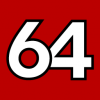-
Posts
12428 -
Joined
-
Last visited
-
Days Won
554
Content Type
Profiles
Forums
Events
Everything posted by Fiery
-
We still have no plans about an AIDA64 for Linux software. Regards, Fiery
-
Yes, it should be possible, but first we have to identify a few key aspects of your configuration, like NVMe driver type. If it's possible, please upgrade to the latest beta version of AIDA64 Extreme available at: http://www.aida64.com/downloads/latesta64xebeta After upgrading to this new version, make sure to restart Windows to finalize the upgrade. Then right-click on the bottom status bar of AIDA64 main window --> Disk Debug --> ATA Dump. Copy-paste the full results into this topic, or attach it as a TXT file to your post. Then right-click on the bottom status bar of AIDA64 main window --> Disk Debug --> SMART Dump. Copy-paste the full results into this topic, or attach it as a TXT file to your post. Finally, right-click on the bottom status bar of AIDA64 main window --> Disk Debug --> Disk Controllers Dump. Copy-paste the full results into this topic, or attach it as a TXT file to your post. You may need to enable the status bar in AIDA64 / main menu / View before performing those dumps. Thanks, Fiery
-
Thank you for the feedback and your support In the next AIDA64 beta we'll also add PCH Core temperature readout, and fix the issue about the MPS temperature indexing. As for the Assist fan and other fans, I'm afraid due to a special indexing trick used by your motherboard, not all fans can be measured by AIDA64. If we did try to use the indexing trick in AIDA64, that could raise major issues like the EC chip going crazy, system lockup, sudden system restart, etc. So we cannot and would not risk that.
-
Thank you. Please upgrade to the latest beta version of AIDA64 Extreme available at: http://www.aida64.com/downloads/latesta64xebeta After upgrading to this new version, make sure to restart Windows to finalize the upgrade. Let me know how it works
-
We haven't yet found a way to measure such values. As far as I can tell, those values are calculated using an internal (ie. non-public) formula that is proprietary per PSU SKU.
-
Thank you for the screen shot. AIDA64 seems to have an issue identifying your motherboard as Sabertooth Z170. If it's possible, please right-click on the bottom status bar of AIDA64 main window --> Sensor Debug --> ISA Sensor Dump. Copy-paste the results into this topic, or attach it as a TXT file to your post. Also right-click on the bottom status bar of AIDA64 main window --> Sensor Debug --> Embedded Controller Dump. Copy-paste the results into this topic, or attach it as a TXT file to your post. Thanks, Fiery
-
Thank you for the feedback. Did you check those values on the Computer / Sensor page? If yes, then on that page there should also be more readings about your PSU, like two PSU temperatures, PSU fan (as long as it's spinning), PSU input voltage and aggregated PSU output wattage.
-
We've implemented Corsair HXi and RMi Series PSU sensor support in the latest beta version of AIDA64 Extreme available at: http://www.aida64.com/downloads/latesta64xebeta After upgrading to this new version, make sure to restart Windows to finalize the upgrade. Let me know how it works
-
Thank you for the feedback. We've implemented the missing readings in the following new AIDA64 beta update: http://www.aida64.com/downloads/latesta64xebeta Let me know if it works 100% now
-

Read SMART data and temperature through a RAID controller
Fiery replied to dejiko's topic in Hardware monitoring
FYI, due to numerous reports of very slow AIDA64 startup, since AIDA64 Beta Build 3620, Adaptec RAID support has been disabled by default. You need to enable in AIDA64 / main menu / File / Preferences / Stability / Adaptec RAID support. -
What you quoted is not the latest beta The latest beta is 5 days old: http://www.aida64.com/downloads/latesta64xebeta If it still cannot provide accurate readings, then please post a screen shot of the Computer / Sensor page of AIDA64, or copy-paste the content of that page into this topic as text. Thanks, Fiery
-
I know it's exactly the same answer as before for Dutch, but ... The only thing I can spot there is the HID UPS call. If you don't have a smart UPS, then please disable HID UPS sensor support in AIDA64 / main menu / File / Preferences / Stability. If you do have such a UPS, then try to disable the same option to see if it makes the thread creation error go away.
-
Thank you for the data. We've checked those, but I'm afraid we cannot find the RPM there We've also checked the ACPI BIOS for your system, but it also hasn't got any traces of a fan RPM reading mechanism. It still doesn't mean your notebook is incapable of measuring fan RPM, but at this point only Lenovo could provide information on that.
-
Thank you for the info. And no, I'm afraid AIDA64 doesn't support that device, and we have no technical information/details that we could use to start working on it either
-
AIDA64 can do whatever the underlying hardware can do If the notebook PC you've got is capable of measuring fan RPM, and also capable of providing the readout to 3rd party applications like AIDA64, then -- at least in theory -- AIDA64 can indeed show that value. However, when the hardware itself is not prepared to measure fan RPM, then no software will be able to show such value to you, including AIDA64. By that I'm not saying that your notebook is not capable of measuring fan RPM, but instead that there's no proof so far that it could. We can try digging deeper if you can provide a few debug dumps about your sensor devices: Please right-click on the bottom status bar of AIDA64 main window --> Sensor Debug --> ISA Sensor Dump. Copy-paste the full results into this topic, or attach it as a TXT file to your post. You may have to enable the status bar in AIDA64 / main menu / View first. Then also right-click on the bottom status bar of AIDA64 main window --> Sensor Debug --> SMBus Dump (Full). Copy-paste the full results into this topic, or attach it as a TXT file to your post. Finally, right-click on the bottom status bar of AIDA64 main window --> Sensor Debug --> Embedded Controller Dump. Copy-paste the full results into this topic, or attach it as a TXT file to your post. Thank you.
-
Do you have any tools, made by Lenovo or a 3rd party, that could display the fan RPM? Or maybe you can see that reading in the BIOS Setup? Just because the fan has got 3 wires, it doesn't mean the RPM is really monitored by the onboard Embedded Controller chip.
-

(Solved) CPU fan 2 recognized as System fan (ASRock Z77 Pro4)
Fiery replied to Thermaltake's topic in General Discussion
The mentioned new AIDA64 beta update is available for download at: http://www.aida64.com/downloads/latesta64xebeta After upgrading to this new version, make sure to restart Windows to finalize the upgrade. Let me know how it works -
We've implemented support for Enermax Digifanless USB sensor protocol in the latest beta version of AIDA64 Extreme available at: http://www.aida64.com/downloads/latesta64xebeta After upgrading to this new version, make sure to restart Windows to finalize the upgrade. Let me know how it works
-

Support for new Thermaltake SMART DPS G Power Supplies
Fiery replied to Zoork's topic in Hardware monitoring
Please right-click on the bottom status bar of AIDA64 main window --> System Debug --> USB Dump. Copy-paste the full results into this topic. Under Windows 10 you may have to enable the statusbar first in main menu / View. -
Yes, both is possible, as long as we can easily find the window and read the window title (case #2), or when it's easy to understand/interpret the shared memory content (case #1). With shared memory a documentation would help a lot
-

Support for new Thermaltake SMART DPS G Power Supplies
Fiery replied to Zoork's topic in Hardware monitoring
The original DPS-G is fully supported by AIDA64, but we're not sure if Thermaltake uses the same protocol for the newer DPS-G PSUs. You have to try AIDA64, and you will see whether it works. If it doesn't work, we can try adjusting the existing code to suit the new PSU family. I have to stress the fact that I cannot make actual promises about this: PSU sensor support is a difficult issue that we may or may not be able to solve. In most cases manufacturers do not implement an API or SDK, and refuse to provide the necessary documentation on the PSU USB protocol. We may still be able to figure out what to do to read the sensor values, and in many cases we can indeed do it. -

Error reporting Last Shutdown time, Last Boot Time and Uptime
Fiery replied to Signalman's topic in General Discussion
It should be there. http://www.eightforums.com/tutorials/6320-fast-startup-turn-off-windows-8-a.html -
Thank you for the feedback. I understand the issue of potential firewall blocking our network access, but it shouldn't lead to crashing AIDA64. In fact, the relevant code of AIDA64 uses standard Win32 internet API calls, and it's well protected against fatal errors and exceptions. I suppose the protection against that malware is so strong that it causes the underlying internet API crash or return some garbage data to AIDA64. BTW, I've removed the ....aida64.com URL from your post, I hope you don't mind
-
I think you could see the same issues on the HW Monitor page of the BIOS Setup. Which would indicate this is actually a problem with the onboard sensor chip that simply cannot measure RPM for fans connected via a splitter cable.

